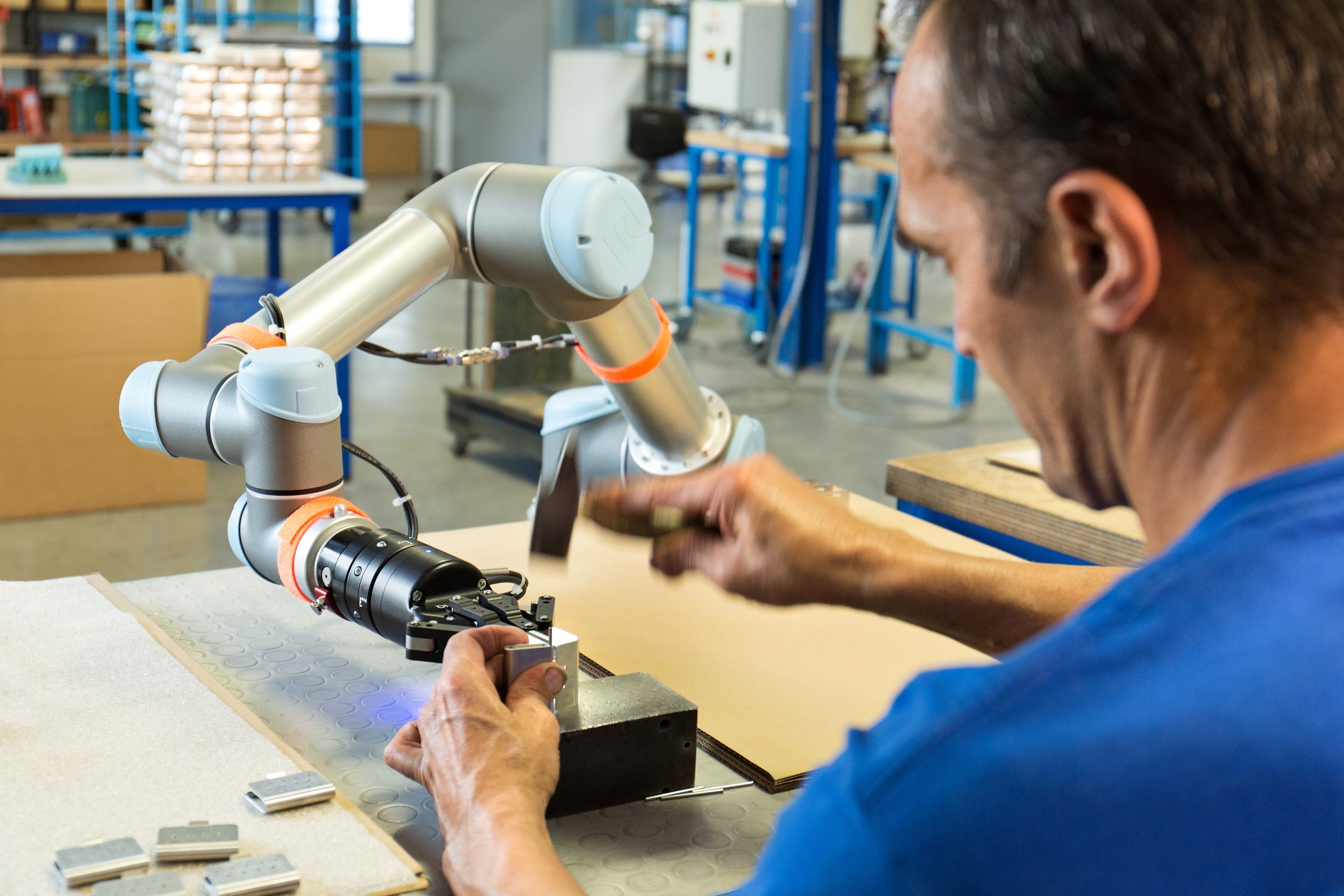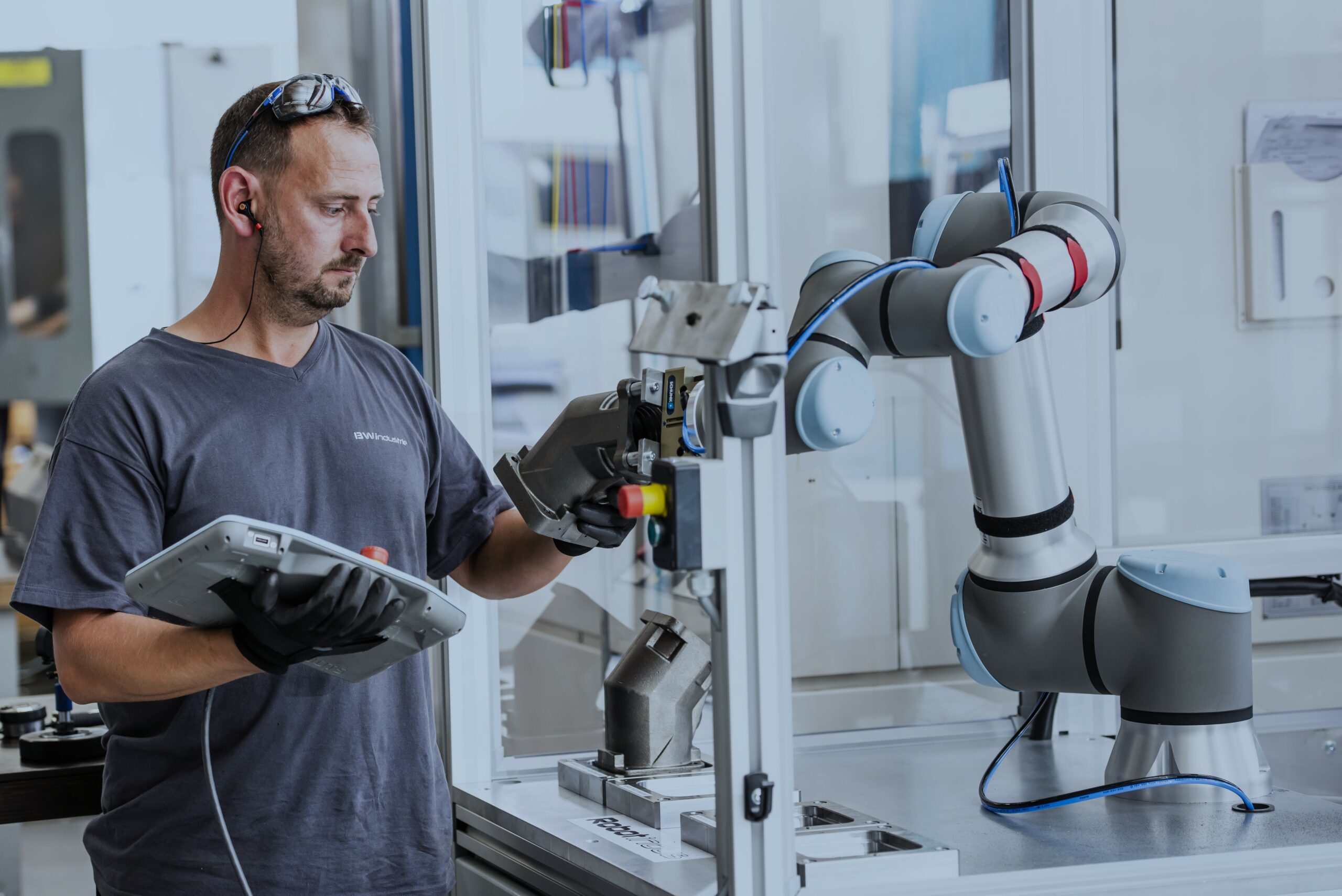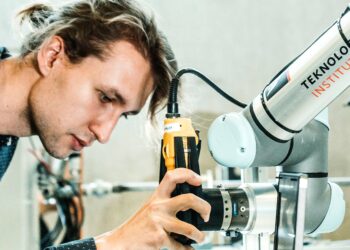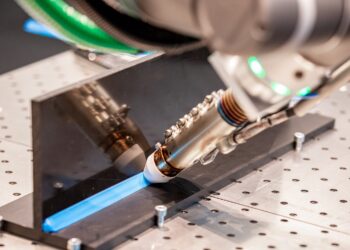Industry 4.0 has set the tone for the digital transformation of manufacturing processes in recent years. With smart factories, automated systems and advanced data analytics, companies have taken their efficiency to unprecedented heights. But while Industrie 4.0 is still in full development, a new revolution is already emerging: Industry 5.0. In this next phase of industrial evolution, the focus shifts from fully automated processes to human-machine collaboration, in which cobots (collaborative robots) play a crucial role. This blog explores the transition from Industrie 4.0 to 5.0 and the impact of this shift on smart manufacturing.
From automation to collaboration
Industry 4.0 focused mainly on automation and digitisation, with robots and machines largely taking over production. While this led to significant productivity gains, it also created a sense of alienation between humans and technology. Industry 5.0 breaks with this paradigm by putting humans back at the centre, but now in collaboration with advanced technology. Cobots are designed to work alongside humans, not replace them. They offer a level of precision and strength that complements and enhances human labour, while performing tasks that can be difficult or dangerous for humans.

The role of cobots in Industry 5.0
Cobots are much more than just an addition to existing automation systems; they are at the heart of Industry 5.0. These collaborative robots are equipped with sensors, AI and machine learning algorithms that enable them not only to perform physical tasks, but also to learn and adapt to their working environment. This makes it possible for companies to provide customisation on a scale previously unthinkable. Whereas traditional robots perform standardised tasks, cobots can handle complex, variable processes where human intuition and flexibility are indispensable.
Impact on the labour market
The introduction of Industry 5.0 raises questions about the role of the human worker in an increasingly automated world. Contrary to fears that automation will eliminate jobs, Industrie 5.0 actually creates new opportunities. The collaboration between humans and cobots allows workers to focus on creative and complex tasks, while repetitive or dangerous work is performed by the cobots. This leads to a redefinition of skills and functions within the industry, with the focus on maximising human capabilities through technology.

Smart manufacturing in practice
Smart manufacturing under Industry 5.0 goes beyond simply optimising processes; it is about creating a manufacturing environment where innovation is central. Cobots play a key role in this by collecting and analysing real-time data, allowing companies to react immediately to changes in the market or production conditions. Thanks to the flexibility of cobots, production lines can be quickly adapted to new requirements without sacrificing efficiency or quality. This makes it possible to produce personalised products on a large scale, something that was impossible in previous industrial revolutions.
The way forward: challenges and opportunities
While the transition to Industry 5.0 presents many opportunities, it also brings challenges.Integrating cobots requires rethinking business processes and investing in new technologies. Companies must ensure that their employees are prepared for this change and provide the necessary training and support to work effectively with cobots. At the same time, this transformation offers huge opportunities for companies willing to invest in innovation and adapt to the new industrial reality. WiredWorkers plays an important role here by guiding companies through this transition and providing them with the expertise and technology needed to be successful in Industry 5.0.

Conclusion
The shift from Industrie 4.0 to Industrie 5.0 marks a new phase in industrial evolution, in which cooperation between humans and machines is central. Cobots play a crucial role in this by combining the power of automation with human creativity and intuition.Companies that embrace this change can count on a future of flexible, efficient and personalised production processes. WiredWorkers is ready to support companies in this transformation and help them fully exploit the benefits of Industry 5.0.

Whether you're a small business starting out with automation or a large company aiming to optimize existing systems, cobots can be a gamechanger as we transition into Industry 5.0. By enhancing collaboration between humans and machines, cobots are paving the way for smarter, more efficient production processes. Contact us or schedule a free consultation to find out how we can help you harness the power of collaborative robots for your business.





